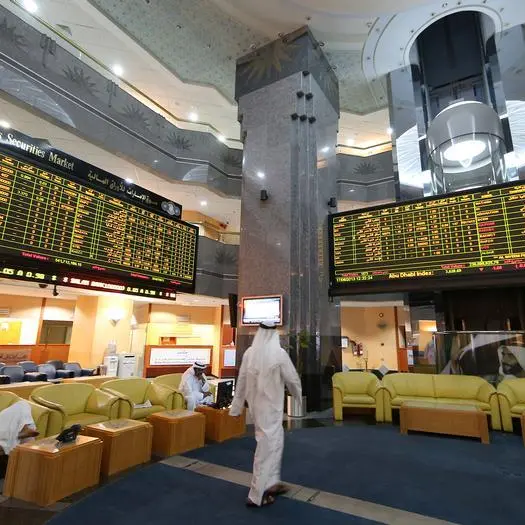PHOTO
PLANS continue to be on track to deploy the world’s first multi-national sea drone covering the Arabian Gulf, said a US Navy commander.
The US Navy in Bahrain announced last year as part of its digital ocean drive to deploy 100 unmanned surface vessels (USVs) in the regional waters this summer.
The fleet is being set up under the Juffair-based Task Force 59 (TF-59) which integrates new unmanned systems and artificial intelligence (AI) into naval operations across the Middle East.
“The trajectory toward meeting our goal continues,” Fifth Fleet spokesman Commander Rick Chernitzer exclusively told the GDN as TF-59 marked its first anniversary last month.
“We’re about halfway there, as our regional partners continue contributing to the effort and acquiring platforms of their own, we expect to exceed our goal.
“Our key focus is strengthening partnerships and accelerating innovation.
“That’s at the heart of our efforts across the region, and our integration of unmanned systems and AI enable us to do both.”
Commander Chernitzer stressed the US Navy is ‘committed to moving out quickly to deliver unmanned capabilities to other regions’.
The US Navy started operating the Saildrone Explorer USV in the Arabian Gulf since last year.
The 23-foot-long, 16-foot-tall USV relies on wind power for propulsion and houses a package of sensors powered by solar energy to build a shared picture of the surrounding seas.
An unmanned system (US), or vehicle (UV), is controlled by a remote pilot and can navigate autonomously based on pre-programmed plans or specific targets.
Other USV deployed was an Ocean Aero Triton that is capable to operate up to three months surfaced or eight months submerged.
Solar-powered Open Ocean Robotics Data Xplorer was also used during a naval exercise, which can sail for months collecting data using a suite of sensors.
The digital ocean drive using TF-59 replaces the traditional naval operations of deploying an aircraft carrier with thousands of sailors on board with a well-equipped sea drone that can patrol for days and transmit live imagery or unusual movements to the headquarters.
Commander Chernitzer said until last month more than 30 multilateral and bilateral at-sea exercises were conducted and six operational deployments around the Arabian Gulf.
TF-59 was commissioned in 2021 and has deployed a suite of new unmanned systems from operational hubs in Bahrain and Aqaba, Jordan, and conducted joint exercises with participation of the Royal Bahrain Naval Force.
The taskforce commander is Captain Colin Corridan who relieved Captain Michael Brasseur in March this year.
“We’ve had 55,000 hours operating surface drones since the task force’s inception (2021),” added Commander Chernitzer “That equates to 26 years of 9-to-5 operations for five-days-a-week.
“These unmanned systems expand what we call maritime domain awareness.
“Imagine if you are a country that can normally see 30km off your coast on any given day with existing sensors and crewed ships.
“You can add an unmanned platform with radar and optics that are satellite-controlled and now you have doubled your detection ranges.
“If you put another unmanned platform further out there, you can then triple your ability to monitor what’s happening at sea – with only a very modest investment.”
He said the systems work in conjunction with their crewed ships to help rapidly respond to situations. “This is what we call the Digital Ocean,” he explained.
The taskforce has 12 regional and international partners, and closely works with the Royal Bahrain Naval Force.
“Right now, we are operating the latest persistent intelligence, surveillance and reconnaissance technology on the surface of the water called Saildrone Voyagers,” he added. “The United States isn’t doing this alone. We’re working side-by-side with our global allies and regional partners, including operating drones from bases in Manama and Aqaba, in close partnership with Bahrain and Jordan.”
The spokesman added they continue to work closely and fruitfully with their Bahraini counterparts, in particular, earlier this year when Bahrain led the 38-member nations Combined Maritime Forces during a joint patrol in the Arabian Gulf.
“Ships from Bahrain, Kuwait and Saudi Arabia operated together while a long-endurance unmanned surface vessel called a Saildrone Explorer helped extend how far the ships could see,” said Commander Chernitzer.
The spokesman said the Comprehensive Security Integration and Prosperity Agreement (C-SIPA) signed last month between Bahrain and the US further strengthens defence and military ties between the two nations.
His Royal Highness Prince Salman bin Hamad Al Khalifa, Crown Prince and Prime Minister, signed a landmark agreement in Washington with US Secretary of State Antony Blinken, as reported in the GDN.
One of the key points that C-SIPA will deliver is enhancing deterrence, including through expanded defence and security co-operation, interoperability, and mutual intelligence capacity building.
C-SIPA will help formalise steps taken by US Central Command to integrate the region’s air and missile defence systems and increase maritime domain awareness.
“We’re excited and eager to continue building on the strong partnership between our nations, particularly in light of the recent C-SIPA signed on September13,” the spokesman added.
“This is a significant upgrade in our strategic relationship with Bahrain, one of the longest and closest partners – indeed friends – of the United States in the broader Middle East region.”
One of the main threats encountered by the TF-59 was from the Iranian Revolutionary Guard Corps (IRGC).
IRGC support ship Shahid Baziar towed a Saildrone Explorer USV last year in an attempt to detain it, but US naval forces stepped in and disconnected the towline to the USV, and resumed operations.
The Fifth Fleet stated that the IRGC attempted to confiscate a US government property, equipped with sensors, radars and cameras for navigation and data collection.
US forces in July this year prevented two attempted commercial tanker seizures by the Iranian Navy, which had opened fire in one of the incidents near the coast of Oman in international waters.
In the first incident, one Iranian naval vessel approached the Marshall Islands-flagged oil tanker TRF Moss in international waters in the Gulf of Oman.
Another Iranian vessel came within one mile of Bahamian-flagged oil tanker Richmond Voyager while the ship was more than 20 miles off the coast of Muscat, Oman, and transiting international waters toward the Arabian Sea.
Iranian personnel fired multiple, long bursts from both small arms and crew-served weapons at Richmond Voyager.
There were no casualties but several rounds hit the ship’s hull near crew living spaces.
Commander Chernitzer, when asked about IRGC actions and measures taken to offset it, declined to comment specifically due to ‘operational security concerns’.
“We’ve been very clear that the IRGCN’s actions were flagrant, unwarranted and inconsistent with the behaviour of a professional maritime force,” he said.
“US naval forces remain vigilant and will continue to fly, sail and operate anywhere international law allows while promoting the rules-based international order throughout the region.”
Naval forces in the Middle East last month successfully integrated unmanned platforms with traditionally-crewed ships and aircraft to conduct enhanced maritime security operations in the waters surrounding the Arabian Peninsula.
Seven task forces falling under the Fifth Fleet integrated 12 different unmanned platforms with manned ships for ‘manned-unmanned teaming’ operations, tracking Iranian navy ships and small boats over several days during routine patrols in and around the Strait of Hormuz.
This operation bolstered its presence in and around a critical chokepoint that in recent months has seen Iran unlawfully seize internationally-flagged merchant ships.
Bahrain is home to the US Navy’s Fifth Fleet and its estimated 8,000 military members and their dependants.
Copyright 2022 Al Hilal Publishing and Marketing Group Provided by SyndiGate Media Inc. (Syndigate.info).























